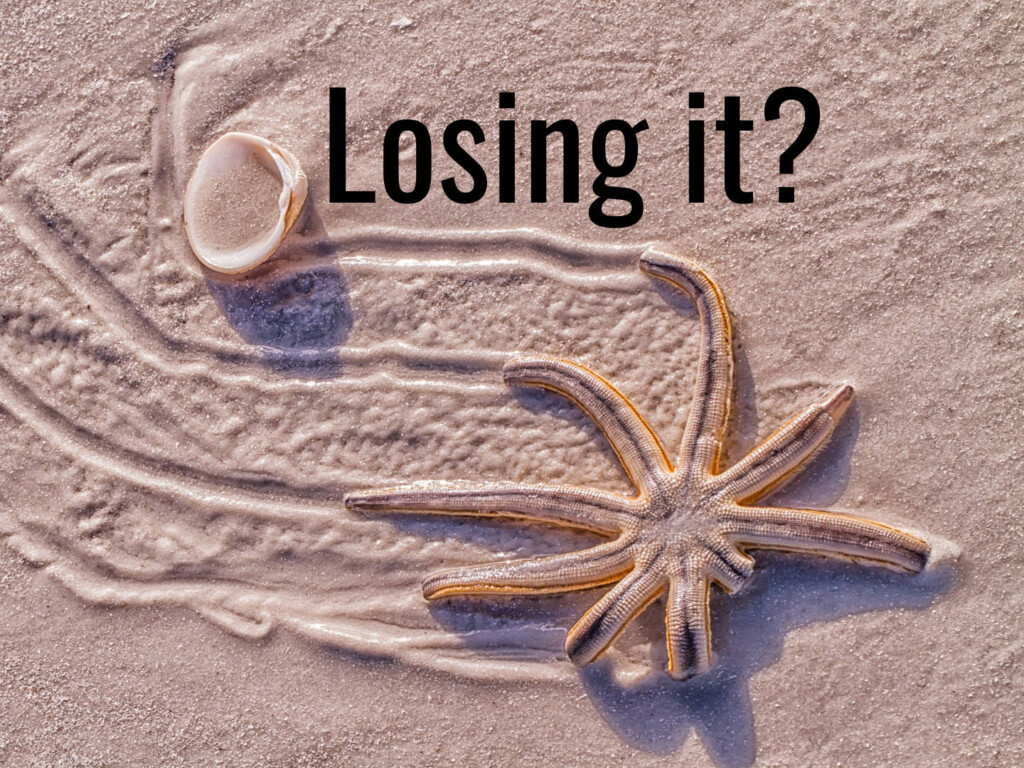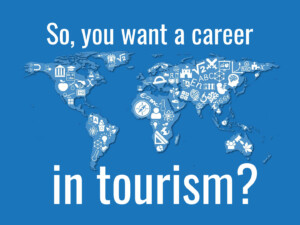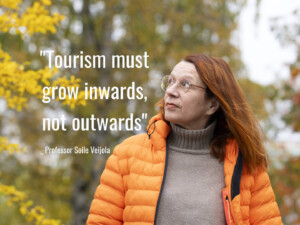The problem with critical tourism studies

Is critical tourism studies losing its edge? Are CTS scholars shying away from the politics that are at the heart of critical theory?
Prof Mary Mostafanezhad writes this “Good Tourism” Insight about critical tourism studies at the invitation of Tourism’s Horizon: Travel for the Millions, a “GT” Insight Partner.
Not what you expect
Critical tourism studies (CTS) might not be what you expect. Almost every CTS scholar I’ve encountered — except one — loves travelling, whether for leisure, visiting friends and family, or attending academic conferences.
Instead of a critique of tourism, CTS refers to scholarship with its Frankfurt School-rooted critical theory and cultural studies, with a focus on core social categories such as race, class, ethnicity, and gender. Utilising a multidisciplinary perspective, they examine how tourism discourse and practice can perpetuate and/or challenge political-economic and social inequalities. Thus, CTS diverges from apolitical tourism studies.
Don’t miss the “GT” Insight Bites asking: ‘What does it mean to be critical of tourism?’
Today, tourism scholars distinguish between tourism studies and tourism management and between critical and descriptive approaches. For instance, from a CTS perspective, the emphasis on tourism management-based solutions often distracts from and often seeks to band-aid deeper structural causes of the problems it aims to solve, such as political-economic inequality, environmental degradation, and social injustice.
Consequently, rather than concentrating on better managing the tourism industry, CTS scholars focus on the underlying drivers of political-economic inequality and social issues in tourism. They also highlight the discursive nature of power relations, the connection between tourism representations and society, and the historically situated, place-based, and multi-scalar nature of tourism discourses and practices.
The ‘critical turn’ in tourism studies
The rising popularity of the critical tourism studies (CTS) framework is evident with the increasing number of CTS conferences and related events. The inaugural CTS conference in Dubrovnik in 2005 has since expanded to include collaborations beyond Europe and North America. For instance, the recent ATLAS Critical Tourism Studies – Asia-Pacific biennial conference takes place in Asia Pacific and draws a significant number of scholars from Asia, the Pacific, and beyond. This demonstrates the field’s growth from its Euro-American beginnings into a truly international platform.
Significantly, scholars in sociology, anthropology, and geography have engaged in work akin to what we now call “critical tourism studies”. For instance, Hosts and Guests: The Anthropology of Tourism (Smith, 1989) was an early intervention in this regard (Adams, 2024b; Mostafanezhad & Cheer, 2024; Swain, 2024).
Other key figures include
- Dean MacCannell (1973, 1976),
- Erik Cohen (1988, 1989),
- Nelson Graburn (2001, 1979, 1983), and
- Margaret Swain (1989, 1995).
Despite this, it wasn’t until the early 2000s that this scholarship was rebranded as CTS and identified as a distinct interdisciplinary field. This interdisciplinary rebranding gained traction throughout the 2000s, facilitating the unification of scholarship across disciplines.
In 2007, Irena Ateljevic, Nigel Morgan, and Annette Pritchard declared a “critical turn in tourism studies” which ushered in a new generation of CTS scholars (Ateljevic, Pritchard, & Morgan, 2007; Morgan, Pritchard, Causevic, & Minnaert, 2018).
Is critical tourism studies losing its edge?
Today, scholars of critical tourism studies (CTS) explore issues long central to social scientists, like inequality, gender, host-guest dynamics, authenticity, and commoditisation, neoliberal development, socio-environmental change, and geopolitical encounters (Bianchi, 2009). As a result, CTS has provided an interdisciplinary platform for tourism-focused scholars from tourism and social science departments.
Lately, CTS seems to have lost some of its critical edge. The focus has shifted to apolitical reflections on embodiment, hope, and imagination, neglecting the political aspects of these topics. This shift also overlooks the core issues that CTS originally aimed to tackle, such as social injustice, political-economic inequality, and environmental degradation.
Don’t miss Phoebe Everingham’s ‘Travel & tourism’s ‘critical’ rethink and its imperative shift to circular economics’
These shifts have triggered many would-be CTS scholars to retreat to their disciplinary homes from which they once came, where critical scholarship is the norm, rather than the exception. This may be a missed opportunity because there’s much to gain from interdisciplinary dialogues.
CTS would be strengthened by a return to its foundations in critical theory and cultural studies, and as a framework from which to understand how tourism industry and practice both reinforces and challenges political and economic inequalities and power dynamics. From this standpoint, tourism was never a standalone discipline but rather a shared subject for analysis within a diverse academic community.
Politics: The beating heart of critical tourism studies
At the heart of critical tourism studies (CTS), I argue, is a commitment to examining the politics and political economies of tourism. Here I briefly outline several potential points of departure for CTS scholars seeking to return to the field’s interdisciplinary roots in critical theory and cultural studies:
The politics of space and place
Scholars of critical tourism studies (CTS) critically examine the politics of space and place in tourism, focusing on how destinations are represented and shaped through various narratives and spatial practices. The portrayal of tourist sites is not only a reflection of their physical attributes but is intimately tied to broader socio-political dynamics that influence perceptions of people and places.
CTS scholars demonstrate how tourism practices contribute to the construction of hegemonic narratives, often marginalising alternative voices and experiences. This interplay among representation, place, and imagination is particularly pronounced in geographical imaginations shaped by colonial histories, which continue to inform tourists’ understanding and differentiation of space and place. Tourists participate in the geographical imaginaries of place, where narratives of self and other are critical to tourism experience.
Critical theorists such as Edward Said (1978), Louis Althusser (1971), and Stuart Hall (1997) have long addressed the role of representation, place, and identity. CTS scholars have drawn on this body of work to better understand how tourism imaginaries are mediated by and mediate tourism and tourists. This line of inquiry interrogates the stereotypes embedded in tourism practices, offering a critical lens on the ideological forces that shape tourism and tourists.
Don’t miss Meghan L Muldoon’s ‘Taming the beautiful monster: What ‘critical tourism studies’ means to me’
Today, the interaction between digital and physical realms adds complexity to conventional tourism areas. Individuals merge virtual and physical experiences, while advancements in transport technologies and shifting labor geographies, which are no longer tethered to place, along with the increasing democratisation of tourism due to the expanding global middle class, have fundamentally altered the connection between tourism and placemaking.
Finally, CTS scholars are increasingly examining how tourism practices intersect with geopolitical narratives. This framing reveals how geopolitical discourses can both reinforce and challenge existing power structures and territorial claims. By integrating concepts such as territorialisation, borders, and sovereignty into tourism studies, scholars are deepening their understanding of how, for instance, heritage, culture, and the tourist gaze are linked to geopolitical dynamics.
Recent global events — such as Brexit, the COVID-19 pandemic, and shifts in U.S. politics — highlight the necessity of exploring these intersections. This evolving field provides a critical framework for unpacking the complex relationships between tourism, space, and power, emphasizing the ideological influences that shape tourist experiences and perceptions of place and placemaking practices.
The politics of culture
Scholars of critical tourism studies (CTS) have long been invested in unpacking how cultural politics shape tourism practices and discourses (Sturken, 2007; Su & Teo, 2008). They have paid particular attention to the cultural politics of authenticity, heritage, and identity (T. Oakes, 2005; T. S. Oakes, 1993). Engaging with the cultural politics of representations reveals how it can perpetuate as well as challenge cultural stereotypes and shape power dynamics within tourism.
Over the past two decades, ethnographic methods have gained prominence among CTS scholars interested in how culture unfolds in tourism contexts. Ethnographic approaches offer a more nuanced understanding of the cultural politics at play, as researchers analyze everyday tourist behaviors and experiences, situating them within broader social and political-economic contexts (Adams, 2024a).
Through this methodological approach, CTS scholars address the complexities of cultural representation in tourism, revealing how meaning is crafted through narratives, mobility patterns, and collective imaginings (Salazar & Graburn, 2014). This critical engagement with the politics of culture offers a lens into the socio-political implications of tourism practices.
The politics of the environment
Over the past decade, scholars of critical tourism studies (CTS) have begun investigating the politics of environmental change. Often drawing from political ecology scholarship, CTS scholars are focused on a range of environmental problems such as climate change, deforestation, and toxic waste, as well as the role of international agreements in addressing these challenges.
Scholars in political ecology emphasise the power dynamics and structural relationships that influence local communities’ management of natural resources and land use, revealing how these interactions are often shaped by historical legacies (Cole, 2012; Douglas, 2014; Mosedale, 2015; Mostafanezhad, 2018).
Like CTS, political ecology is not a theory per se as much as an approach that advocates for place-based, historically situated, and multi-scalar analyses of ecological change and its ties to social relations. This critical lens is particularly relevant in tourism studies, where scholars address themes such as the political ecology of communities and power, conservation and control, and development and conflict (Mostafanezhad, Norum, Shelton, & Thompson-Carr, 2016). These themes demonstrate the socio-political implications of tourism practices, particularly how environmental narratives shape tourism and tourists.
Finally, emerging work in geopolitical ecologies further enriches our understanding of how environmental factors influence political spaces, offering new insights into the complex relationships between tourism, conservation, and socio-political dynamics.
What do you think?
Share your own thoughts about critical tourism studies in a comment below.
(SIGN IN or REGISTER first. After signing in you will need to refresh this page to see the comments section.)
Or write a “GT” Insight or “GT” Insight Bite of your own. The “Good Tourism” Blog welcomes diversity of opinion and perspective about travel & tourism, because travel & tourism is everyone’s business.
“GT” doesn’t judge. “GT” publishes. “GT” is where free thought travels.
If you think the tourism media landscape is better with “GT” in it, then please …
About the author

Mary Mostafanezhad is a Professor at the Department of Geography & Environment, University of Hawaiʻi at Mānoa, USA.
Prof Mostafanezhad writes this “Good Tourism” Insight about critical tourism studies at the invitation of Tourism’s Horizon: Travel for the Millions, a “GT” Insight Partner.
Featured image (top of post)
The problem with critical tourism studies (CTS): Is CTS losing its edge? Starfish image by Dulcey Lima (CC0) via Unsplash.


![The problem with critical tourism studies 5 Professor Valeria Minghetti: "[B]e curious. Never stop asking yourself questions. Curiosity and the desire to find solutions is what makes a difference ..."](https://www.goodtourismblog.com/wp-content/uploads/2024/05/Professor-Valeria-Minghetti-300x225.jpg)


